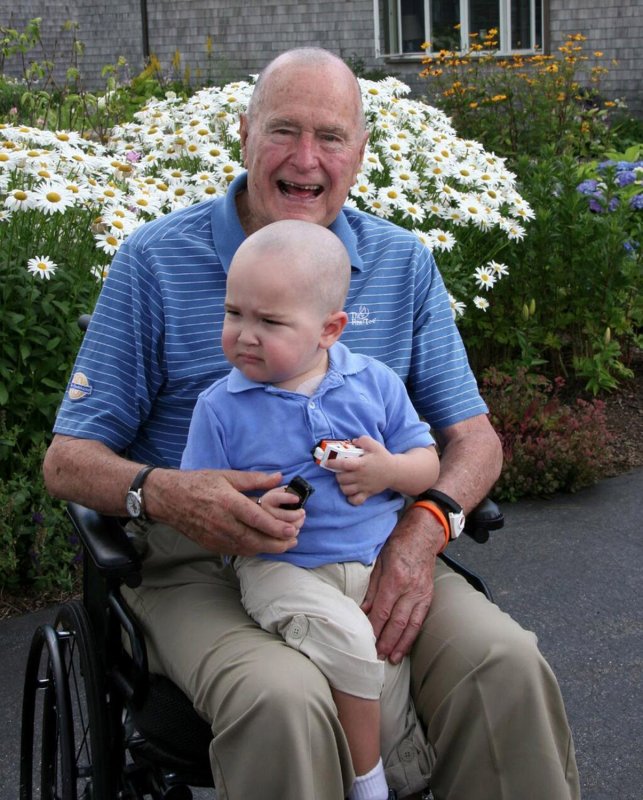In a photo provided on July 24, 2013 by former President George H. W. Bush shows the former president with a shaved head with Patrick, who is the son of one of his Secret Service agents, in Kennebunkport, Maine. Bush shaved his head in solidarity with Patrick, who is losing his hair due to treatments for his leukemia. (Quality Repeat) UPI |
License Photo
NEW YORK, Oct. 22 (UPI) -- U.S. researchers say they devised a hair restoration method with the potential to actually grow new follicles using a patient's own cells.
Co-study leader Professor Angela M. Christiano and colleagues at the Columbia University Medical Center in New York said other hair restoration methods redistribute hair from one part of the scalp to another. The new approach could significantly expand the use of hair transplantation to women with hair loss, who tend to have insufficient donor hair, as well as to men in early stages of baldness.
"About 90 percent of women with hair loss are not strong candidates for hair transplantation surgery because of insufficient donor hair," Christiano said in a statement.
"This method offers the possibility of inducing large numbers of hair follicles or rejuvenating existing hair follicles, starting with cells grown from just a few hundred donor hairs. It could make hair transplantation available to individuals with a limited number of follicles, including those with female-pattern hair loss, scarring alopecia, and hair loss due to burns."
Co-study leader Colin Jahoda of Durham University in England and co-director of North East England Stem Cell Institute said dermal papilla cells give rise to hair follicles, and the notion of cloning hair follicles using inductive dermal papilla cells has been around for 40 years or so.
In the human skin, the dermal papillae are small, nipple-like extensions.
"However, once the dermal papilla cells are put into conventional, two-dimensional tissue culture, they revert to basic skin cells and lose their ability to produce hair follicles," Jahoda said.
The researchers suspected that rodent dermal papillae -- unlike human papillae -- tend to spontaneously aggregate, or form clumps, in tissue culture.
The researchers cultured human papillae in such a way as to encourage them to aggregate the way rodent cells do spontaneously, it could create the conditions needed to induce hair growth in human skin.
Christiano and colleagues harvested dermal papillae from seven human donors and cloned the cells in tissue culture; no additional growth factors were added to the cultures. After a few days, the cultured papillae were transplanted between the dermis and epidermis of human skin that had been grafted onto the backs of mice. In five of the seven tests, the transplants resulted in new hair growth that lasted at least six weeks.
"This approach has the potential to transform the medical treatment of hair loss," Christiano said.
The findings were published in the online edition of the Proceedings of the National Academy of Sciences.















